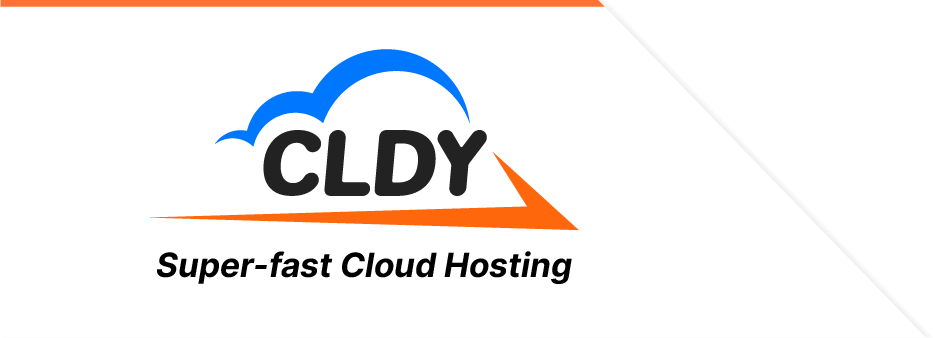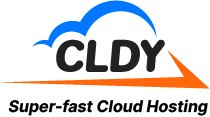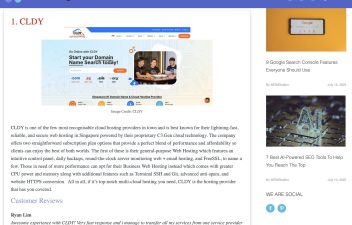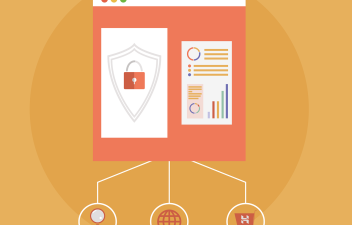Starting a blog in 2025 is one of the best ways to share your passion, build your brand, or even earn an income online. Here is a beginner guide that will walk you through in building a blog in 2025.
Table of Contents
- Why Blogging Still Matters in 2025
- What People Really Want From Blogging
- How to Choose a Blog Niche
- Picking the Best Platform for Your Blog
- The Must-Have Setup: Domain, Hosting, WordPress
- Simple Blog Design That Keeps Readers Reading
- Writing Content That Keeps Readers Engaged
- Building Content That Demonstrates E-A-T
- Getting Your Blog Content Found and Shared
- Monetization Paths That Work in 2025
- Tools and Resources Every Blogger Needs
- Prioritizing Your Blogging Journey
Why Blogging Still Matters in 2025?
Blogging has been around for over 20 years. Today, with so many new platforms — TikTok, Instagram Reels, YouTube Shorts, and now AI search — it’s natural for people to wonder:
Do people still read blogs?
Isn’t blogging outdated?
Why blog when everyone’s on social media?
The truth? Yes, blogging still works — but it has evolved.
People still read blogs for solutions. Social media is great for entertainment, but when someone is searching “best web hosting in Singapore” or “how to build a personal brand”, they go to Google — and land on a blog.
Blogs adapt to search and AI. In 2025, blogs don’t just rank on Google, they also get referenced by AI tools like ChatGPT or Perplexity. That makes them even more powerful as evergreen sources.
Blogs drive action, not just clicks. Unlike a viral TikTok that disappears in a week, a well-written blog can bring steady leads, sales, and authority for years.
So the better question isn’t “Why blog?” — it’s “Can you afford not to?” If you care about visibility, authority, and long-term digital assets, blogging is still one of the smartest plays in 2025
What People Really Want From Blogging
In 2025, when people ask, “How do I start a blog?” they’re not really just looking for the technical steps. What they truly want to use it to build:
- A side hustle that can grow into a steady income stream
- A platform to showcase their expertise and attract clients
- A personal brand that stands out in a crowded market
- The freedom to work from anywhere, on their own terms
When we first launched CLDY, we built two content systems with distinct purposes. The first served as a true resource hub — a place where customers could learn how to get the most out of our domain and hosting services through step-by-step “how-to” guides. The second focused on delivering important updates about CLDY, introducing new products and features, and diving deeper into the topics our customers cared about most with clear, in-depth answers.
Over time, these two platforms evolved into a powerful engine of authority and trust, becoming known as the place where people could empower themselves with practical “how-to” guidance and seek out the knowledge.
How to Choose a Blog Niche
If you want your blog to be successful in 2025, your niche matters more than anything else. It’s what sets the foundation for your content, your audience, and eventually your income. So here are a few guiding principles to keep in mind when choosing one:
- Stay focused — avoid being “everything to everyone.”
The biggest mistake new bloggers make is writing about too many topics at once. When your blog has a clear focus, readers know exactly what to expect, and search engines know how to categorize you. That clarity builds trust — and it makes Google happy. - Choose what you know (and enjoy).
Your niche should align with your expertise, skills, or interests. If you don’t enjoy writing about it, you’ll burn out quickly. A blog is a long game — so you need a topic that excites you enough to keep producing content consistently. - Check if people are searching for it.
Even the best content won’t grow if nobody is looking for it. Use free tools like Google Trends or even AI keyword generators to see if there’s real demand. The sweet spot is a niche that people actively search for but isn’t overcrowded with massive competitors. - Make sure it has monetization potential.
Look for opportunities to turn your blog into income — whether through affiliate products, services, courses, or sponsorships. For example, finance, health, tech, and lifestyle are broad areas that continue to adapt well to AI-driven search changes and have strong earning potential. - Pick something you can go deep on.
Ask yourself: Could I write 50+ posts on this topic without running out of ideas? If the answer is yes, you’ve likely found a niche that has depth, longevity, and room to grow.
Pro Tips: The Self-Exploration Part of Choosing a Niche
At the end of the day, picking a niche isn’t just a “business decision” — it’s also a personal one. The best niche lies at the intersection of:
- What you believe in (your values and passions)
- What you’re skillful at (your knowledge and strengths)
- What genuinely interests you (the spark that keeps you motivated)
- When these three align, blogging doesn’t feel like a chore. Instead, it becomes a natural extension of who you are — and that authenticity is exactly what attracts and keeps readers.
Picking the Best Platform for Your Blog
If your platform is clunky or overly complicated, you’ll dread logging in — and that kills consistency, which is the lifeblood of blogging. On the other hand, when your setup feels effortless, writing becomes second nature. You’ll find yourself publishing more often, staying motivated, and focusing on ideas instead of fighting with tech.
Here’s what to look for in a platform:
- Ease of use — A clean editor where writing feels smooth and distraction-free.
- Flexibility — Customization options to grow with you as your blog evolves.
- Workflow fit — Tools that match how you like to work (scheduling, integrations, or even mobile writing if you’re always on the go).
- Ownership — Remember, your blog should be your asset, not something that disappears if a platform shuts down.
After years of testing different tools, I’ve found that WordPress remains the best blogging platform for most people.
It balances ease of use with powerful customization, making it just as beginner-friendly as it is scalable for bigger projects.
WordPress is a content management system (CMS). It gives you the framework to create and manage blog posts, pages, and designs — but on its own, it isn’t enough to run a live website.
To make your blog accessible online, you also need:
-
A domain — your blog’s address on the internet (e.g.,
yourname.com). This is what people type in to reach your site. -
Hosting — the server space where your WordPress site, files, and database are stored and delivered to visitors.
The Must-Have Setup: Domain, Hosting, WordPress
To start your blogging journey, you’ll need three essentials: a domain, reliable hosting, and a content management system (CMS). This combination gives you a professional online presence, full control over your content, and the ability to grow long-term.
- Choosing the Right Domain
Your domain is your digital address — it should be simple, memorable, and aligned with your brand. For registration and management, we recommend CLDY, where you’ll get reliable service and full control over your domain. - Choosing the Right Hosting
Hosting is where your blog “lives” online. Speed, uptime, and security are critical, especially in 2025 where Google ranks sites with fast loading times and strong protection higher in search results. CLDY’s hosting is designed with speed and security at its core, ensuring your blog is built on a foundation optimized for performance. - Choosing the Right Blogging Platform
For most people, WordPress remains the best choice. It’s flexible, SEO-friendly, and supported by a massive community. With WordPress, you can scale from a simple blog to a full online business. While alternatives like Ghost or Webflow exist, WordPress continues to dominate when it comes to monetization options and long-term community support.
Why This Combination Works Best
Pairing WordPress with CLDY hosting gives you the strongest head start. WordPress makes it easy to publish, optimize, and grow your blog, while CLDY ensures your site is blazing fast and secure — two factors Google now prioritizes heavily in rankings. Together, they form a blogging setup that is both beginner-friendly and future-proof.
Simple Blog Design That Keeps Readers Reading
Your blog’s design isn’t just about looking good — it’s has to be able to keep readers engaged. A cluttered site drives people away, while a clean, well-structured design makes them stay, read, and come back for more.
Here are the design principles that matter most in 2025:
- Prioritize readability.
Make your text easy on the eyes. Use clear fonts, generous line spacing, and short paragraphs. Readers should be able to scan your post without effort. - Use strong headlines and subheadings.
Big, bold headlines guide your reader through the article. Subheadings break content into digestible chunks, making even long posts inviting to read. - Embrace white space.
Don’t cram your blog with ads, widgets, or unnecessary distractions. White space gives your content breathing room and keeps attention on what matters — your words. - Be mobile-first.
More than half of blog traffic comes from mobile devices. Your layout should adapt seamlessly, with text, images, and buttons easy to read and tap on small screens.
Most wordpress themes for selection, today is automatically mobile responsive. Don’t have to worry about this part when you are use wordpress as your blogging platform. - Simplify navigation.
Clear menus, search functionality, and logical categories help readers find what they want quickly. If visitors get lost, they won’t stay. - Balance visuals and text.
High-quality images, infographics, or embedded videos can make your blog more engaging — but only if they support the content. Don’t overload your pages with media that slows things down.
Pro Tip: In 2025, engagement matters more than ever. Adding a comment section to your blog gives readers a place to interact, ask questions, and share their views.
This not only builds community but also signals to search engines and social platforms that your content is active and valuable.
Blogs with strong comment activity are more likely to spark discussions and get shared, driving additional traffic from social channels.
Writing Content That Keeps Reader Engaged
In 2025, good blog content isn’t about choosing between SEO and authenticity — it’s about blending the two. The goal is simple: write for humans first, but structure your posts so Google (and AI search tools) can understand and recommend them.
Here’s how to do it well:
- Use keywords naturally.
Keywords still matter, but stuffing them makes your writing feel robotic. Instead, weave them into titles, subheadings, and sentences where they fit smoothly. Think of keywords as signposts, not the whole road. - Keep your content easy to scan.
Most readers don’t read line by line — they skim. Use short paragraphs, clear subheadings, and bullet points so people can quickly grab the value they came for. - Add visuals and supporting data.
Images, infographics, and charts break up text and make posts more engaging. Data or statistics add credibility and help your content stand out as trustworthy.
For example: 77% of internet users still read blogs — especially when searching for solutions. - End with a clear call-to-action (CTA).
Never let your content trail off. Guide readers to the next step — whether that’s joining your email list, reading another article, or trying your product. Every post should have a purpose. - Show your voice and perspective.
SEO can bring visitors in, but your personality keeps them coming back. Share your unique stories, insights, or experiences. That’s what makes your content memorable and shareable.
If you are still unsure where to start, you can follow this Google’s guideline which is to build content that demonstrates E-A-T (Expertise, Authoritativeness, Trustworthiness). It is a very relavant concept and framework that all articles needs.
Search engines and readers alike look for signals that your content is credible. Show your expertise by sharing insights from real experience, back up claims with data or references, and keep your tone professional yet approachable. Highlight customer success stories, certifications, or partnerships to reinforce authority. Most importantly, write in a transparent way that builds trust — answer questions clearly, avoid fluff, and make it easy for readers to verify or apply what you’re saying.
Getting Your Blog Content Found and Shared
Publishing great content is only half the battle — the other half is making sure people find it and share it. In 2025, blog promotion requires a mix of organic and paid strategies, matched with the right balance of time and budget.
- Social MediaShare the link to your blog directly on TikTok, Instagram, LinkedIn, and X. Always add an image or thumbnail that makes people stop scrolling — a headline graphic, a strong photo, or a simple quote pulled from your post. Most clicks happen in the first 24–48 hours, so think of social as a quick traffic boost.
- Send to Your Email ListEmail is still one of the most reliable ways to reach readers. Build a subscriber list from day one, even if it starts small. Every time you publish, send a short email linking to your new post. Unlike social, email doesn’t disappear after 48 hours. A list of even 500–1,000 people can drive consistent traffic back to your site. And because you own the list, no algorithm can cut you off.
- Optimize for Search (SEO)Search engines are where most people begin their online journey. By optimizing your blog posts — using relevant keywords, writing clear meta descriptions, and earning backlinks — you increase your chances of showing up when someone searches for your topic. SEO takes longer to pay off, but it compounds over time. A well-ranked post can bring in traffic for months or years without extra effort.
- Collaborate with OthersGuest posting on another blog or collaborating with an influencer in your niche exposes your content to audiences you wouldn’t reach otherwise. It also helps you build authority and earn backlinks, which improve SEO. This method takes more effort, since you’re creating content for someone else’s platform, but one strong collaboration can send you targeted readers long after the post goes live.
- Use Paid AdsIf you want quick results, paid ads can get eyes on your content right away. Platforms like Google Ads, Facebook, or LinkedIn let you promote a post to a specific audience. The catch is cost — anywhere from a few dollars a day to much more, depending on your niche. Paid promotion is best used strategically, such as boosting posts that lead into your email list or sales funnel.
- Repurpose Into Other FormatsA single blog post can be reshaped into multiple pieces of content:A YouTube video walking through the main points
A podcast episode discussing the topic in depth
Short clips or tip lists for TikTok or InstagramRepurposing extends the life of your blog post and helps you reach people who prefer video or audio instead of text.
Monetization Paths That Work For Blog Site in 2025
A blog isn’t just a passion project — it can also be a serious income stream. In 2025, there are more ways than ever to turn your content into revenue. The key is to choose the paths that match your niche, your audience, and your long-term goals.
Here are some of the most effective monetization strategies today:
- Affiliate Marketing
Recommend products, tools, or services your readers already need, and earn a commission when they buy through your links. Affiliate marketing works especially well in niches like hosting, software, health, and finance.
🎯 Example: A simple “best hosting” comparison blog can make thousands of dollars each month just by linking to affiliate partners. - Selling Digital Products or Courses
Turn your knowledge into ebooks, templates, or full online courses. Unlike affiliates, where you share revenue, digital products give you full control and higher margins. If you consistently provide value through your blog, your readers will be eager to buy what you create. - Ad Revenue (with Caution)
Displaying ads through networks like Google AdSense can provide passive income, but it usually works best with very high traffic. Ads should be treated as a supplementary income source — not your main strategy — so they don’t distract from user experience. - Offering Services
Blogs are powerful lead generators for consulting, coaching, design, writing, or any service-based business. Readers who trust your content are often the first to hire you because they already see you as an authority. - Sponsorships and Partnerships
Once your blog grows, brands may pay you directly for sponsored posts or collaborations. This can be lucrative, but should be balanced carefully to maintain audience trust.
The best monetization strategy is usually a mix. Start with one or two (like affiliate marketing or services), then expand into digital products or courses once you’ve built a loyal audience. With the right approach, your blog can evolve from a side project into a reliable business asset.
Tools and Resources Every Blogger Needs
Starting a blog isn’t just about writing and hoping people will find it. In 2025, you need to publish more consistently than ever, or you risk getting drowned out in the noise. More content also means less time, so efficiency becomes critical. Reaching people isn’t optional — it’s part of the game. That’s why having the right tools matters. The right toolkit helps you save time, track traffic, expand your reach, and keep your content visible in a crowded space.
- SEO Tools
Search is still a major traffic driver, and you’ll need insights to understand what people are looking for. Premium platforms like Ahrefs and SEMrush are powerful, but even free tools (like Google Keyword Planner or Ubersuggest) can help you spot opportunities and optimize your posts. - Email Marketing Platform
Your blog should do more than attract readers — it should capture them. An email list lets you nurture subscribers, promote new content, and build a loyal audience you own. Tools like ConvertKit, Mailchimp, or even simpler options like MailerLite are great starting points. - Analytics
To grow, you need to measure. Google Analytics is still the industry standard, but privacy-friendly alternatives like Plausible or Fathom give you simpler dashboards without the overwhelm. Analytics helps you see what content resonates and where your traffic comes from. - Visual Tools
Strong visuals keep readers engaged. Platforms like Canva make it easy to design graphics, while AI tools can generate illustrations, infographics, and even social snippets from your blog posts. Quality visuals are no longer optional — they’re part of the experience. - Productivity & Writing Helpers
Tools like Grammarly or Hemingway can polish your writing, while AI assistants can help brainstorm ideas or generate outlines. The goal isn’t to replace your voice, but to save you time and keep your content sharp.
Having the right stack of tools makes blogging less about struggling with tech and more about focusing on what matters — creating content that connects and grows your audience.
Prioritizing Your Blogging Journey
Blogging success doesn’t happen overnight. It’s about starting with the basics, working within your comfort level, and gradually investing more time and resources as you grow. Here’s a smart way to prioritize your efforts:
- Start with the essentials (base level).
Get your foundation right: a domain, hosting, and WordPress. This is the minimum setup you need to establish your digital home. - Focus on consistent publishing.
Your first priority is to write and publish. Don’t worry about being perfect — aim for consistency. Every article you post is another chance to attract readers and build authority. - Choose one organic growth channel.
Instead of spreading yourself thin across every social platform, pick one channel to test — maybe LinkedIn, TikTok, or even SEO-driven Google traffic. Stick with it long enough to see results. Organic growth requires patience, but it compounds over time. - Move into paid marketing (one channel at a time).
When you’re ready to invest, focus your budget on one paid channel. Whether it’s Google Ads, Meta Ads, or another platform, don’t scatter your money across multiple places. A concentrated approach gives you cleaner data and better results. - Wait, measure, and refine.
Results take time. Use analytics to track what’s working, then double down on it. The key is patience — the early months are about learning and building momentum. - Don’t give up too early.
Many blogs fail not because the strategy was wrong, but because the blogger quit before compounding kicked in. Stay consistent, keep refining, and remember: blogging is a long-term game. - Work out a timeline.Create a simple roadmap. For example:
- Month 1–2: Set up your blog, publish 5–10 posts.
- Month 3–6: Focus on one organic growth channel.
- Month 6–9: Introduce a paid marketing experiment.
- Month 9–12: Refine what works, scale up.
At every stage, your priority is to provide value. If your blog genuinely helps someone — answers their question, solves their problem, or inspires them — then every effort you put in will be worth it.
